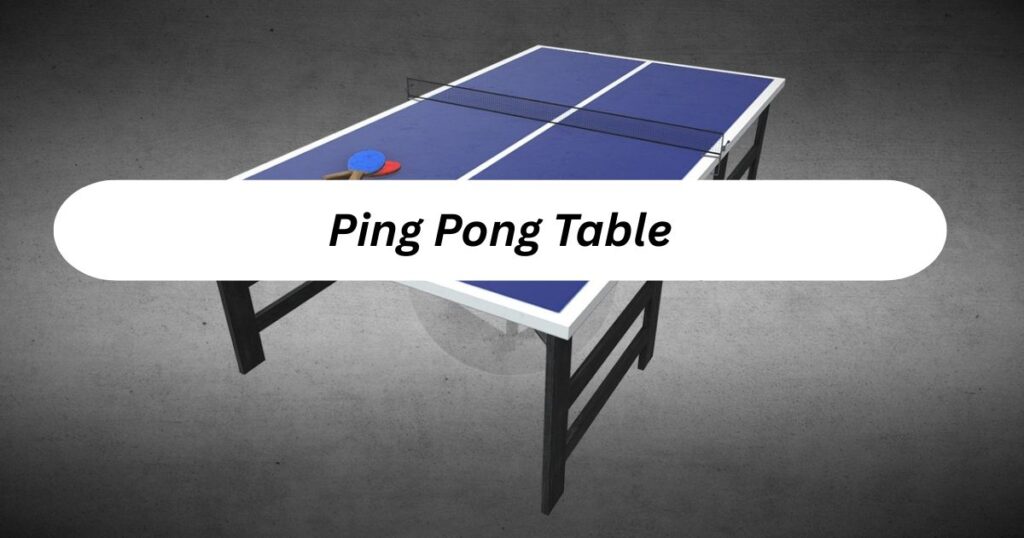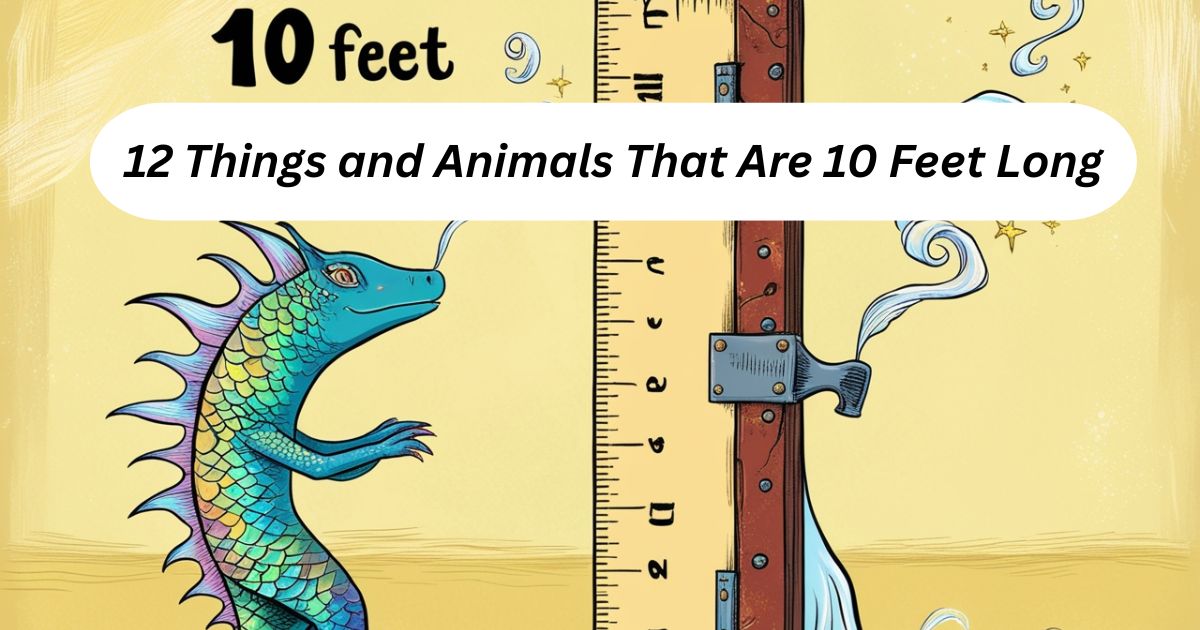Have you ever struggled to envision exactly how long 10 feet actually is? This measurement appears constantly in our daily lives, yet many of us have trouble accurately picturing it without a visual reference.
Whether you’re planning home improvements, discussing wildlife facts, or simply trying to describe a distance to someone else, having a clear understanding of what 10 feet looks like can be incredibly useful.
In this comprehensive guide, we’ll explore various objects measuring 10 feet and animals that are 10 feet in length to help you better visualize this common measurement in practical, real-world terms.
🔎 New in 2025: Why Searchers Are Curious About “10 Feet Long” Things
In 2025, people are searching more than ever for “things that are 10 feet long” due to DIY home projects, wildlife education, and virtual reality designs.
With the rise of tools like AI measurement apps and smart design planners, this measurement helps people make better choices in real life and digital spaces.
Also, many school curriculums now use “real-world measurement examples” to teach kids about math and size—which makes 10 feet a fun and useful topic!
How Big is 10 Feet?
To start with the basics, 10 feet equals approximately 3 meters or 120 inches. While that might sound straightforward, these numbers alone don’t always help us visualize the actual scale. 10 feet represents a significant distance—one that appears frequently in architecture, sports, nature, and everyday objects.
When thinking about how big is 10 feet, consider that standard doorways in American homes are typically 6’8″ tall, meaning 10 feet is significantly taller than any doorway you walk through.
Most residential vehicles are between 14-16 feet long, so 10 feet represents roughly two-thirds of a standard car’s length. These comparisons provide a starting point for visualizing 10 feet in contexts you encounter daily.
How Long is Ten Feet Compared to a Human?
One of the most effective ways to conceptualize 10 feet is by comparing it to human height. The average American adult male stands about 5’9″ (5.75 feet), while the average adult female is approximately 5’4″ (5.33 feet). This means that 10 feet is nearly twice the height of an average person.
To put this in perspective, someone who stands 6 feet tall would need to reach up an additional 4 feet to touch a 10-foot ceiling. If you and a friend who is 5’6″ tried to stand on each other’s shoulders, your combined height would still fall slightly short of 10 feet. This comparison explains why 10-foot ceilings feel so spacious compared to standard 8-foot ceilings found in most homes.
How Far is 10 Feet in Steps?
When measuring distances without tools, many people use their steps as a rough approximation. For most adults walking at a normal pace, 10 feet equates to approximately 3 to 4 steps. This can vary based on your height and stride length, but generally speaking, each step covers about 2.5 to 3 feet.
This natural measuring without tape method has been used throughout human history and remains a practical skill for learning spatial awareness. Next time you need to estimate a 10-foot distance in daily life, simply count out 3-4 of your normal walking steps. This technique helps when arranging furniture or planning spaces where scale and proportion matter.
1. Single Floor Height
Walk into any home with 10-foot ceilings, and you’ll immediately notice the dramatic difference compared to standard 8-foot ceilings. This additional height creates a sense of spaciousness and grandeur that transforms ordinary rooms into impressive spaces. The extra vertical space allows for larger windows, more dramatic lighting fixtures, and improved air circulation throughout the home.
Architects and interior designers often recommend 10-foot ceilings for main living areas to create a feeling of luxury and openness. This height provides enough space to display substantial artwork on walls while maintaining proper proportions. Real estate professionals note that homes with 10-foot ceilings typically command premium prices, with buyers willing to pay 5-15% more for these higher ceilings.
2. A Basketball Hoop
Perhaps the most universally recognized example of a 10-foot height is the standard basketball hoop. Since Dr. James Naismith invented the game in 1891, the rim height has remained consistently at 10 feet above the court. This standardization ensures fair play across all levels of the sport, from neighborhood driveways to professional arenas.
The basketball hoop height presents a perfect physical challenge—tall enough that players must develop significant jumping ability and shooting skills to score, yet not so high as to make the game impossible for average-height players.
Consider that even with the average NBA player standing around 6’7″, they still need to jump significantly to dunk the ball through a 10-foot hoop. As basketball coach John Wooden once said, “The true test of a player isn’t reaching the rim—it’s mastering the precision needed to consistently put the ball through a hoop 10 feet high.”
3. Half of a Giraffe

When discussing impressive heights in the animal kingdom, giraffes immediately come to mind. A full-grown male giraffe can reach heights of up to 15 feet, making 10 feet just about two-thirds of their total height. Female giraffes typically stand around 14 feet tall, so 10 feet represents roughly 71% of their full stature.
What’s particularly fascinating about giraffe height facts is that much of their impressive stature comes from their extraordinarily long necks and legs. Even a baby giraffe stands around 6 feet tall at birth! These magnificent creatures have evolved their exceptional height as an adaptation that allows them to feed on vegetation that other herbivores cannot reach, particularly in the savannah environments of Africa.
4. A Kayak
For water enthusiasts, a 10-foot kayak represents an ideal middle ground in the kayak length comparison spectrum. These vessels are neither too short to track well in open water nor too long to maneuver in tighter spaces. The 10-foot length has become particularly popular for recreational paddlers seeking versatility across different water conditions.
Examining the 10-foot kayak more closely reveals why this length works so well. It provides enough waterline for decent speed and tracking on lakes and coastal waterways, while remaining lightweight enough (typically 35-45 pounds) for a single person to transport.
Made from materials like fiberglass or polyethylene, these kayaks balance performance, durability, and affordability. Paddling enthusiasts often recommend 10-foot kayaks as the ideal starter boat for beginners.
| Kayak Type | Typical Length | Best Use | Approximate Weight |
| Recreational | 9-12 feet | Lakes, slow rivers | 35-45 pounds |
| Touring | 12-15 feet | Open water, longer trips | 45-55 pounds |
| Whitewater | 6-9 feet | Rapids, fast rivers | 30-40 pounds |
| Fishing | 10-14 feet | Stable fishing platform | 60-100 pounds |
| Sea | 14-18 feet | Ocean conditions | 50-70 pounds |
5. Two Park Benches
Standard park benches in public spaces typically measure about 5 feet in length, making two placed end-to-end approximately 10 feet long. This park bench size has been carefully determined through decades of urban planning to balance comfort, capacity, and space efficiency in public areas.
The 10-foot span created by two adjacent benches forms a natural gathering space that comfortably seats 4-6 adults. Urban designers utilize this measurement frequently when planning public spaces, ensuring adequate seating while maintaining proper pedestrian flow.
Landscape architect Frederick Law Olmsted, who designed many famous American parks, noted that “The proper spacing of public seating creates the rhythm of a park’s social experience”—a principle that continues to guide the placement of these 5-foot benches throughout public spaces today.
6. Amur Tiger
The magnificent Amur tiger, also known as the Siberian tiger, stretches an impressive 10 feet from nose to tail tip. This makes it one of the most imposing land predators and a perfect example of animals that are 10 feet in length. Native to the forests of Eastern Russia and parts of China, these massive cats represent the largest living tiger subspecies.
The Amur tiger size isn’t just impressive—it’s essential to their survival in the harsh, cold environments they inhabit. Their substantial length allows for powerful muscles that enable them to take down prey as large as elk and wild boar.
An adult male can weigh up to 660 pounds, making them truly formidable hunters. Unfortunately, these magnificent creatures are endangered, with fewer than 600 estimated to remain in the wild.
7. Surfboards
In the world of surfing, longboards measuring approximately 10 feet hold a special place in the sport’s culture and history. These elongated surfboards provide exceptional stability and float, making them perfect for both beginners learning to catch their first waves and experienced surfers looking to perform traditional, graceful maneuvers.
The 10-foot surfboard design offers unique advantages in the water. Their substantial length creates more surface area in contact with the wave, allowing riders to catch waves earlier and with less effort than shorter boards.
Typically weighing between 15-25 pounds, these boards can be crafted from traditional materials like balsa wood or modern alternatives including fiberglass and epoxy. Professional surfer Joel Tudor once remarked, “A 10-foot longboard connects you to surfing’s roots—it’s like riding a piece of the sport’s history.”
8. Alligators

Average alligator length varies by age and gender, but adult males commonly reach 10 feet long, with exceptional specimens growing to 13 feet or more. Found primarily in swampy habitats across the southeastern United States, these impressive reptiles represent one of America’s most recognizable large predators.
The 10-foot threshold represents an important developmental milestone for alligators. Males that reach this size typically become dominant in their territories, with increased mating opportunities and access to prime hunting grounds.
Their powerful tails account for nearly half their total length, providing the propulsion that makes them such effective aquatic hunters. When studying animals longer than 8 feet, alligators stand out for their incredible bite force—measured at over 2,000 pounds per square inch in larger specimens.
9. A Fishing Rod
For serious anglers, particularly those who enjoy surf casting or fly fishing, a 10-foot fishing rod offers the perfect combination of distance and control. These longer rods have become increasingly popular as specialized fishing techniques have evolved to target specific species and conditions.
The advantages of a 10-foot fishing rod become apparent when examining the physics of casting. The extended length creates a longer lever, allowing anglers to generate more line speed and achieve greater distances—often 20-30% farther than casts made with shorter rods.
Constructed from advanced materials like graphite and composite blends, modern 10-foot rods remain surprisingly lightweight while maintaining strength and flexibility. Specialized rod lengths vary widely from 4-foot ice fishing rods to 14-foot specialized fly fishing rods.
10. Utility Poles
Though we rarely pay them much attention, utility poles standing approximately 10 feet tall form the backbone of our modern infrastructure. These ubiquitous structures support essential services like power lines, telecommunication cables, and street lights throughout communities across America.
The height of utility poles is carefully calculated based on safety regulations, clearance requirements, and the specific utilities they support. While main transmission poles can reach 60+ feet, smaller distribution and service poles in residential areas often stand around 10 feet tall.
These poles are typically embedded 6 feet into the ground for stability, with the visible portion extending about 10 feet above the surface. Made primarily from treated wood, concrete, or composite materials, they’re designed to withstand decades of exposure to the elements.
11. Female African Elephants
Standing approximately 10 feet tall at the shoulder, female African elephants provide another impressive example of this measurement in the natural world. While male African elephants can grow even larger, reaching heights of 13 feet and weights over 13,000 pounds, the females still rank among the largest land animals on Earth.
The female African elephant height of 10 feet puts into perspective just how massive these intelligent creatures truly are. Their substantial size serves multiple purposes in their natural environment, allowing them to reach high vegetation, deter predators, and maintain the complex social structures for which elephants are known.
These matriarchs often lead their herds, using their experience and size to guide younger elephants across the savannah landscapes of Africa. Conservation expert Dr. Joyce Poole notes that “Standing beside a female African elephant helps you truly comprehend not just their physical magnitude, but their ecological importance as well.”
12. Ping Pong Table

A regulation ping pong table measures 9 feet in length—just shy of our 10-foot benchmark but close enough to serve as another useful reference point. Standardized by the International Table Tennis Federation (ITTF), these dimensions ensure consistent play in competitions worldwide.
The ping pong table dimensions of 9 feet by 5 feet create a playing surface of 45 square feet, carefully designed to create the perfect balance of accessibility and challenge. The typical table stands 2.5 feet tall and features a thin net extending 6 inches above the surface.
The slight difference between a ping pong table’s 9-foot length and our 10-foot reference point provides an interesting comparison—the table is about 90% of the full distance we’ve been exploring throughout this article.
| Table Tennis Equipment | Standard Measurements |
| Table Length | 9 feet (2.74 meters) |
| Table Width | 5 feet (1.525 meters) |
| Table Height | 2.5 feet (76 cm) |
| Net Height | 6 inches (15.25 cm) |
| Ball Diameter | 1.57 inches (40 mm) |
| Recommended Room Size | 19 × 11 feet (5.8 × 3.3 m) |
13. A Home Theater Projector Screen
Modern home theaters now often use 120-inch (10-foot diagonal) projector screens for movie nights and gaming setups.
This size is perfect for families, offering a cinematic experience at home—especially popular since smart homes and 4K streaming became mainstream.
Many DIY projector setups recommend at least 10 feet of wall space for immersive viewing, making “10 feet” the go-to length in 2025 for entertainment areas.
Wrapping Up
Throughout this exploration of things that are 10 feet long and animals that are 10 feet in length, we’ve encountered a remarkable diversity of examples that help visualize this common measurement.
From the practical applications in architecture with 10-foot ceilings to the impressive stature of female African elephants and the precise standardization of basketball hoop heights, this dimension appears consistently across both natural and human-made environments.
Understanding these 10-foot comparison examples provides practical benefits for everyday life. Whether you’re estimating distances while shopping for furniture, appreciating the true scale of wildlife at a zoo or nature preserve, or simply satisfying your curiosity about the world around you, having these reference points enriches your spatial awareness.
The next time you encounter something approximately 10 feet in length or height, you’ll have a framework of comparison to truly appreciate its scale.
This kind of learning spatial awareness connects us more deeply to our physical environment and the remarkable diversity of ten feet long items that surround us daily. What 10-foot scale in real life examples have you noticed in your own surroundings that weren’t mentioned here? Taking notice of these dimensions adds another layer of appreciation to our everyday experiences.
Read More: Gozynest











